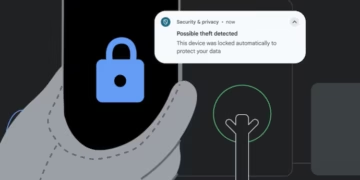Topline
Lumma Stealer, a malicious tool, infected hundreds of thousands of Windows computers globally. Microsoft acted decisively to interrupt communication between affected machines and the malware, safeguarding systems and limiting further impacts on Windows PCs.
Key Details
Nearly 394,000 Windows devices were impacted by the Lumma malware over a two-month period. This malware is designed to steal sensitive information, including passwords, cookies, cryptocurrency wallets, and other data.
The operation involved malicious domains used for distributing and controlling the malware. Microsoft disrupted this network by taking control of over 1,300 domains and redirecting nearly 300 domains to sinkholes, which helped capture harmful traffic for analysis.
Authorities also dismantled the malware’s central command structure and shut down underground marketplaces where Lumma was traded. The coordinated effort reduced the spread of phishing emails, malvertising, and other forms of attack tied to Lumma.
Hackers leveraged legitimate cloud services and Telegram channels to share stolen data and manage their operations. These methods made detection more challenging while enabling communication within the criminal networks.
Understanding Lumma Malware
Lumma Stealer, also known as LummaC2, is a malicious software widely used by hackers to collect sensitive data. Offered as malware-as-a-service (MaaS) on illegal forums, it enables attackers to target victims and profit from stolen information. This infostealer has been used to compromise passwords, bank account details, and cryptocurrency wallets. Lumma often spreads through phishing campaigns impersonating legitimate brands, such as Booking.com, deceiving victims into clicking malicious links. It has affected sectors like healthcare, telecommunications, finance, and manufacturing while also infiltrating gaming communities online.
Unanswered Questions

Several details about the Lumma malware operation remain unclear. It is unknown where the attacks were concentrated geographically or whether the victims were businesses, individuals, or specific industries. Additionally, agencies like Europol and the FBI have not disclosed further insights.
Significant Figure
Lumma’s creator reportedly claimed to have about 400 active clients two years ago, illustrating the malware’s widespread use.
Key Background
Cybercrime activities have surged in 2025, with the education sector experiencing a significant number of attacks—averaging 4,484 per week globally. The rise of tools like generative artificial intelligence has allowed criminals to execute more advanced tactics, such as phishing and social engineering. These techniques exploit human vulnerabilities, posing heightened risks to organizations.
Supply chain weaknesses remain the most significant cybersecurity challenge. The interconnected nature of modern supply chains increases exposure, particularly when suppliers lack strong protections. To counter threats, collaboration between industry leaders, including Microsoft’s Digital Crimes Unit (DCU), has grown. These partnerships focus on deploying layered defenses and disrupting operations like malware-as-a-service (MaaS) models, which fuel cyberattacks on a large scale.
Further Reading
Explore ClickFix for innovative security patches and updates. Cloudflare offers robust web protection tools. CleanDNS enhances domain security, while Lumen and Storm-2477 focus on preventing data breaches effectively.
Frequently Asked Questions
How can users identify Lumma malware infections on their Windows PCs?
To identify potential malware, users can monitor for unusual system activity, unexpected software installations, or degraded performance. Scanning software and security applications can flag infected files.
What are key symptoms signaling a Lumma malware attack?
Common symptoms include frequent pop-ups, changed browser settings, unauthorized access attempts, abnormal transaction alerts





































